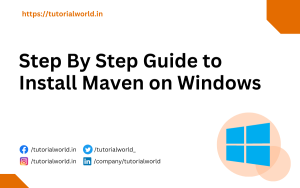Here is the most important Spring Boot topic that you should have a clear understanding of and Hands-on Experience with.
1. Spring Core Concepts
- Dependency Injection and Inversion of Control (IoC)
- Aspect-Oriented Programming (AOP)
- Spring Beans and Bean Scopes
- Spring Configuration Options (XML, Java, Annotation-based)
2. Spring Boot Fundamentals
- Auto-configuration and Starter Dependencies
- Spring Boot Actuator for monitoring and managing applications
- Spring Boot Data for working with databases
- Spring Boot Web for building RESTful web services and web applications
- Spring Boot Testing Frameworks
3. Spring Security
- Authentication and Authorization concepts
- Spring Security Architecture and Configuration
- Password Encoding and Security Best Practices
- JWT (JSON Web Token) Authentication
4. RESTful Web Services
- HTTP methods and status codes
- Resource representations and media types
- HATEOAS (Hypermedia as the Engine of Application State)
- RESTful Web Service design principles and best practices
5. Databases
- SQL and NoSQL databases
- JPA (Java Persistence API) and Hibernate
- Spring Data JPA and Spring Data MongoDB
- Spring Data REST
6. Messaging
- Messaging Concepts
- Spring Integration and Spring AMQP
- Apache Kafka and RabbitMQ
7. Cloud Computing
- Cloud Native Applications and Microservices
- Cloud Platforms such as AWS or Azure
- Docker and Kubernetes
- Cloud Foundry
Here are more detailed explanations of the key topics that I mentioned in my previous response to help you prepare for your Spring Boot job interview
- Spring Core Concepts:
- Dependency Injection and Inversion of Control (IoC): These are two closely related concepts in Spring. Dependency Injection (DI) refers to the technique of providing dependencies to an object, rather than the object creating its dependencies itself. Inversion of Control (IoC) refers to the design pattern in which the control of the flow of a program is inverted from the caller to the framework. In Spring, these concepts are implemented using the ApplicationContext container, which manages the lifecycle of the objects and provides the necessary dependencies.
- Aspect-Oriented Programming (AOP): AOP is a programming paradigm that allows developers to modularize cross-cutting concerns, such as logging, security, and transaction management. In Spring, AOP is implemented using proxies that intercept method calls and perform additional actions before or after the method execution.
- Spring Beans and Bean Scopes: A Spring bean is an object that is managed by the Spring IoC container. Bean Scopes refer to the different ways in which Spring can create and manage instances of beans. The most common bean scopes in Spring are Singleton, Prototype, Request, Session, and Global Session.
- Spring Configuration Options (XML, Java, Annotation-based): Spring supports multiple ways of configuring an application, including XML-based configuration, Java-based configuration, and Annotation-based configuration. Each of these approaches has its own benefits and drawbacks, and the choice depends on the specific needs of the application.
- Spring Boot Fundamentals:
- Auto-configuration and Starter Dependencies: Spring Boot provides auto-configuration, which automatically configures an application based on the dependencies and classpath. Starter Dependencies are pre-packaged dependencies that provide a set of features, such as web applications, security, and databases.
- Spring Boot Actuator for monitoring and managing applications: Spring Boot Actuator provides a set of endpoints that expose information about the application’s health, metrics, and configuration. This information can be used to monitor and manage the application at runtime.
- Spring Boot Data for working with databases: Spring Boot Data provides a set of abstractions for working with databases, including the Spring Data JPA, Spring Data MongoDB, and Spring Data REST projects.
- Spring Boot Web for building RESTful web services and web applications: Spring Boot Web provides a set of abstractions for building web applications, including the Spring MVC framework and the Spring WebFlux reactive web framework.
- Spring Boot Testing Frameworks: Spring Boot provides several testing frameworks, including the Spring Boot Test, which provides a set of annotations for testing Spring applications, and the Spring REST Docs, which generates documentation for RESTful APIs.
- Spring Security:
- Authentication and Authorization concepts: Authentication refers to the process of verifying the identity of a user, while Authorization refers to the process of granting or denying access to resources based on the user’s role or permissions.
- Spring Security Architecture and Configuration: Spring Security provides a set of abstractions for implementing security in a Spring application, including authentication and authorization filters, security interceptors, and access control expressions. The configuration of Spring Security is typically done using Java-based or Annotation-based configuration.
- Password Encoding and Security Best Practices: Spring Security provides several utilities for encoding and hashing passwords, including BCryptPasswordEncoder and PasswordEncoder. Best practices for password security include storing passwords in hashed or encrypted form, using strong and complex passwords, and limiting the number of login attempts.
- JWT (JSON Web Token) Authentication: JWT is a compact, URL-safe means of representing claims to be transferred between two parties. In Spring Security, JWT is used for stateless authentication, where the user’s identity is verified based on the token provided in the request.
- Spring Data:
- Spring Data JPA for working with relational databases: Spring Data JPA provides a set of abstractions for working with relational databases, including the EntityManager, JpaRepository, and QueryDSL.
- Spring Data MongoDB for working with NoSQL databases: Spring Data MongoDB provides a set of abstractions for working with MongoDB, including the MongoTemplate, MongoRepository, and QueryDSL.
- Spring Data REST for building RESTful APIs: Spring Data REST provides a set of abstractions for building RESTful APIs, including the RepositoryRestResource, which automatically exposes the CRUD operations of a repository as RESTful endpoints, and the Spring HATEOAS, which adds hypermedia links to RESTful resources.
- Spring Integration:
- Messaging Patterns and Channels: Spring Integration provides a set of messaging patterns and channels that allow developers to build event-driven and message-driven applications. These patterns include Message, Channel, MessageHandler, and MessageSource.
- Spring Integration Adapters: Spring Integration provides adapters for integrating with other systems and protocols, such as JMS, FTP, JDBC, and Twitter.
- Spring Integration Gateways and Endpoints: Spring Integration provides gateways and endpoints for integrating with external systems, including inbound and outbound gateways, service activators, and message-driven POJOs.
- Spring Cloud:
- Microservices Architecture and Service Discovery: Spring Cloud provides a set of abstractions and tools for building and deploying microservices-based applications, including service discovery and registration using Netflix Eureka or Consul.
- API Gateway and Load Balancer: Spring Cloud provides a set of abstractions and tools for building API gateways and load balancers, including Netflix Zuul and Spring Cloud Gateway.
- Distributed Configuration and Circuit Breaker: Spring Cloud provides a set of abstractions and tools for handling distributed configuration using Spring Cloud Config and for implementing circuit breakers using Netflix Hystrix or Resilience4j.
- Other Spring topics:
- Spring Batch for batch processing: Spring Batch provides a set of abstractions and tools for building batch processing applications, including Job, Step, and ItemReader/ItemWriter.
- Spring Web Services for building SOAP web services: Spring Web Services provides a set of abstractions and tools for building SOAP web services, including support for XML marshalling and unmarshalling using JAXB.
- Spring Cloud Stream for building stream processing applications: Spring Cloud Stream provides a set of abstractions and tools for building stream processing applications, including support for messaging using Apache Kafka or RabbitMQ.
I hope these explanations help you prepare for your Spring Boot job interview!

